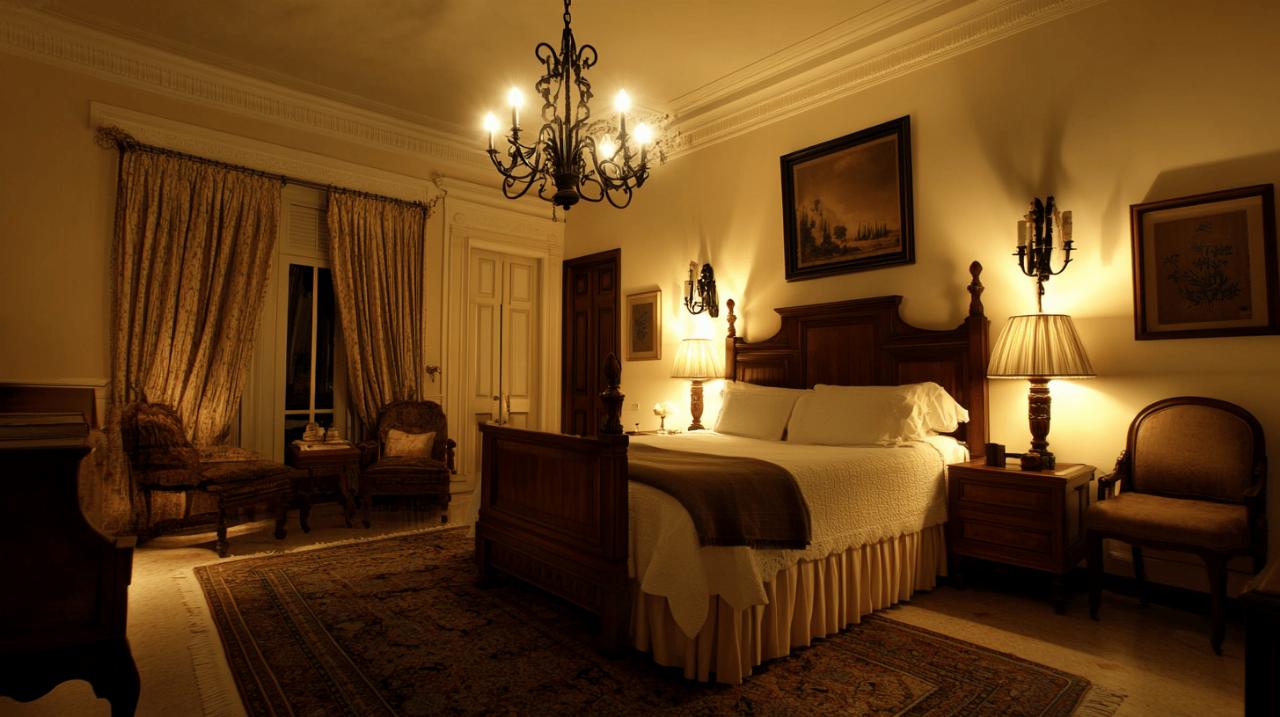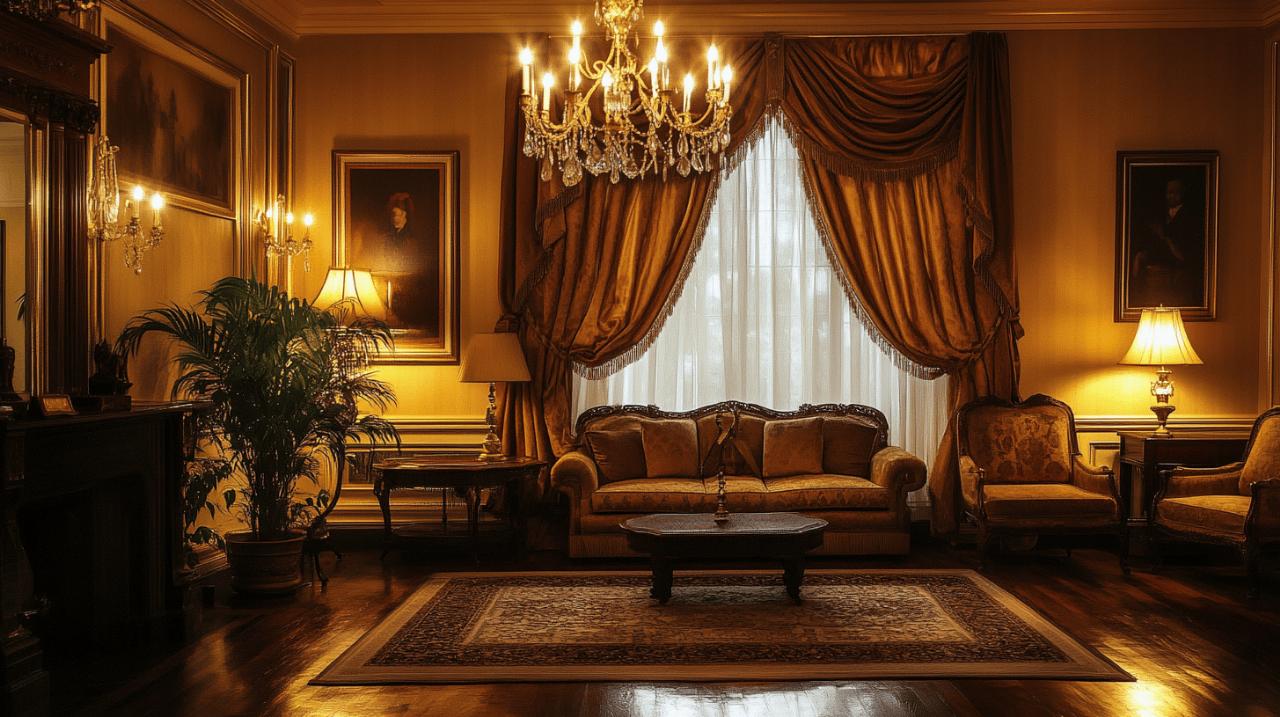
When designing your home with colonial flair, lighting plays a pivotal role in achieving that timeless elegance that defines the style. The right fixtures not only illuminate your space but also anchor your design in the rich heritage of colonial aesthetics. Creating this distinctive look requires careful consideration of fixtures, materials, and placement techniques that honour traditional sensibilities while functioning in modern homes. Let's explore how to master colonial lighting to transform your interiors into sophisticated spaces with historical charm.
Understanding colonial lighting aesthetics
Colonial lighting design draws inspiration from a fascinating historical journey that began in the late 16th century when the British Empire established colonies across America and the West Indies. As highlighted in resources from Residence La Pergola Stintino, colonial style represents a rich blend of European tradition adapted to diverse environments across the globe. This distinctive aesthetic evolved as colonists adapted their traditional British furnishings to hot climates, incorporating local materials and craftsmanship from regions spanning India, Africa, and Asia during the 19th century expansion of the empire.
Historical influences on colonial lighting design
Early colonial lighting was born of necessity rather than pure decoration. Original fixtures were designed around the available illumination sources of the era, namely candles and oil lamps. These practical origins created a distinctive look that modern designers still reference today. The style represents a fascinating fusion of Georgian, Regency, Victorian and Edwardian British elements, often combined with American frontier influences. This eclectic mix creates lighting that feels both sophisticated and approachable, formal yet comfortable, making it enduringly popular for traditional homes.
Key characteristics of authentic colonial light fixtures
Authentic colonial lighting typically features clean lines with subtle ornamentation that never overwhelms the fixture. Metal components frequently showcase aged finishes in brass, wrought iron, pewter, and gunmetal that develop a rich patina over time. In more formal colonial homes, fixtures often included hurricane glass to protect candle flames, while simpler dwellings featured unadorned metals and wood designs. These distinctive characteristics create lighting that serves as both functional illumination and meaningful decorative elements that anchor a space in historical context.
Selecting timeless light fixtures
The enduring appeal of colonial lighting stems from its timeless silhouettes and genuine craftsmanship. When selecting fixtures for your home, focus on designs that have maintained their appeal for generations rather than contemporary interpretations that might quickly feel dated. The most successful colonial interiors feature lighting that feels as though it has always belonged in the space.
Lanterns and chandeliers: Centrepieces of colonial style
Chandeliers serve as magnificent focal points in colonial interiors, particularly in formal rooms and entrance halls with generous ceiling heights. Traditional colonial chandeliers typically feature candle-style lights arranged in tiers or circles, often crafted from brass or bronze with elegant arms and minimal embellishment. Lanterns represent another quintessential colonial fixture, particularly appropriate for entrance halls and kitchens. These versatile lights bring immediate historical character to any space while providing excellent general illumination. Both fixture types establish an immediate sense of traditional elegance that defines colonial interiors.
Wall sconces and table lamps with traditional appeal
Wall sconces were essential elements in colonial lighting schemes, providing soft illumination along hallways and in dining rooms. Many traditional designs featured open candle styles or candles enclosed by hurricane glass for both practical illumination and decorative appeal. Table lamps complemented these fixed fixtures, allowing colonists to bring light where needed for reading or detailed work. Today, these smaller fixtures provide excellent opportunities to introduce colonial style without major renovations, making them perfect starting points for a design transformation.
The importance of warm lighting
The inviting ambiance of colonial interiors relies heavily on the quality of light itself. Unlike contemporary spaces that might feature cool, bright illumination, authentic colonial style demands a warmer approach that mimics the gentle glow of candlelight and oil lamps that would have illuminated original colonial homes.
Choosing the right bulbs for colonial ambiance
While modern reproductions of colonial fixtures accommodate electric bulbs, selecting the right light source remains crucial for authenticity. Opt for bulbs with warm colour temperatures between 2700K and 3000K to recreate the golden glow of traditional flame-based lighting. Consider dimmable options that allow you to adjust brightness levels to create the intimate atmosphere characteristic of colonial interiors. Flame-shaped bulbs in candle-style fixtures further enhance the historical authenticity, providing subtle details that contribute to the overall effect.
Creating inviting spaces with strategic light placement
Colonial lighting design emphasizes creating welcoming, comfortable environments through thoughtful placement. Fixtures should be positioned to eliminate harsh shadows while highlighting architectural features and prized possessions. Consider how light will interact with materials throughout your space, particularly natural elements like wood furnishings and botanical fabrics that feature prominently in colonial design. The goal is to create an environment that feels both sophisticated and comfortable, with illumination that enhances rather than overwhelms the space.
Natural materials in colonial lighting
 The authentic colonial aesthetic relies heavily on natural materials that age gracefully and develop character over time. These elements connect interiors to the natural world while providing warmth and textural interest that cannot be replicated with synthetic alternatives.
The authentic colonial aesthetic relies heavily on natural materials that age gracefully and develop character over time. These elements connect interiors to the natural world while providing warmth and textural interest that cannot be replicated with synthetic alternatives.
Traditional materials: Brass, bronze and wood finishes
Colonial fixtures traditionally featured metals like brass and bronze that develop distinguished patinas with age. These materials reflect the craftsmanship values of the era while providing durability that allows fixtures to become heirlooms. Wood elements, particularly in darker stains like mahogany or teak, complement these metals perfectly and connect lighting to other furniture pieces in the space. When selecting fixtures, look for genuine materials rather than imitations, as the authenticity of these elements contributes significantly to the overall colonial ambiance.
Selecting authentic lampshades for period authenticity
Lampshades play a crucial role in colonial lighting design, influencing both the quality of light and the visual impact of fixtures. Traditional colonial shades were crafted from natural materials like linen or cotton, often in neutral tones that complement the warm woods and metals of the fixtures themselves. When selecting shades, consider pleated or gathered styles that reference historical precedents while providing diffused, flattering illumination. These natural material lampshades enhance the organic feel that characterizes colonial interiors while providing practical light diffusion.
Effective lighting layering techniques
Colonial interiors balance formality with comfort, and achieving this delicate equilibrium requires thoughtful lighting layers that serve both practical and aesthetic purposes. A well-designed colonial space incorporates multiple light sources at different heights to create visual interest and functional illumination for various activities.
Balancing ambient, task and accent lighting
Even in traditional colonial design, the principles of modern lighting layers apply. Ambient lighting provides general illumination through ceiling fixtures like chandeliers or schoolhouse-style pendants. Task lighting supports specific activities through targeted illumination from table lamps or adjustable sconces. Accent lighting highlights architectural features or artwork through carefully positioned directional fixtures. Colonial interiors thrive when these layers work in harmony, creating spaces that function beautifully for contemporary living while honoring historical aesthetics.
Room-by-room colonial lighting strategies
Each room in a colonial home traditionally featured specific lighting approaches tailored to its function. Formal dining rooms often showcased impressive chandeliers complemented by wall sconces for balanced illumination across the table. Living spaces incorporated a mix of ceiling fixtures and table lamps to support both conversation and solitary activities like reading. Bedrooms typically featured symmetrical arrangements of table lamps flanking beds, creating balanced, restful environments. By considering these traditional room-specific strategies, you can create cohesive lighting schemes that enhance the colonial character throughout your home.
Scale and Proportion in Colonial Interiors
The elegance of colonial design relies heavily on proper scale relationships between architectural elements, furnishings, and lighting fixtures. When these proportions are carefully balanced, spaces feel harmonious and intentional rather than haphazard or cluttered.
Matching fixture size to room dimensions
Colonial lighting demands thoughtful sizing considerations to maintain visual harmony. Chandeliers should be proportionate to room dimensions, typically measuring roughly one-third the width of a dining table or one inch in diameter for each foot of room width in living spaces. Wall sconces should be scaled to wall size and ceiling height, with larger rooms accommodating more substantial fixtures. Table lamps should complement the furniture they accompany, neither overwhelming nor appearing insignificant beside substantial colonial furnishings.
Creating visual harmony with properly scaled lighting
Beyond individual fixture sizing, colonial interiors require consideration of how various lighting elements relate to each other and to the overall space. Fixtures should establish visual rhythm through consistent heights, complementary styles, and balanced distribution throughout rooms. When properly scaled, lighting becomes an integral part of the colonial aesthetic rather than appearing as afterthought additions. This harmonious approach creates interiors with the formal yet comfortable character that defines authentic colonial style, resulting in timeless spaces that honor historical traditions while supporting contemporary living.



